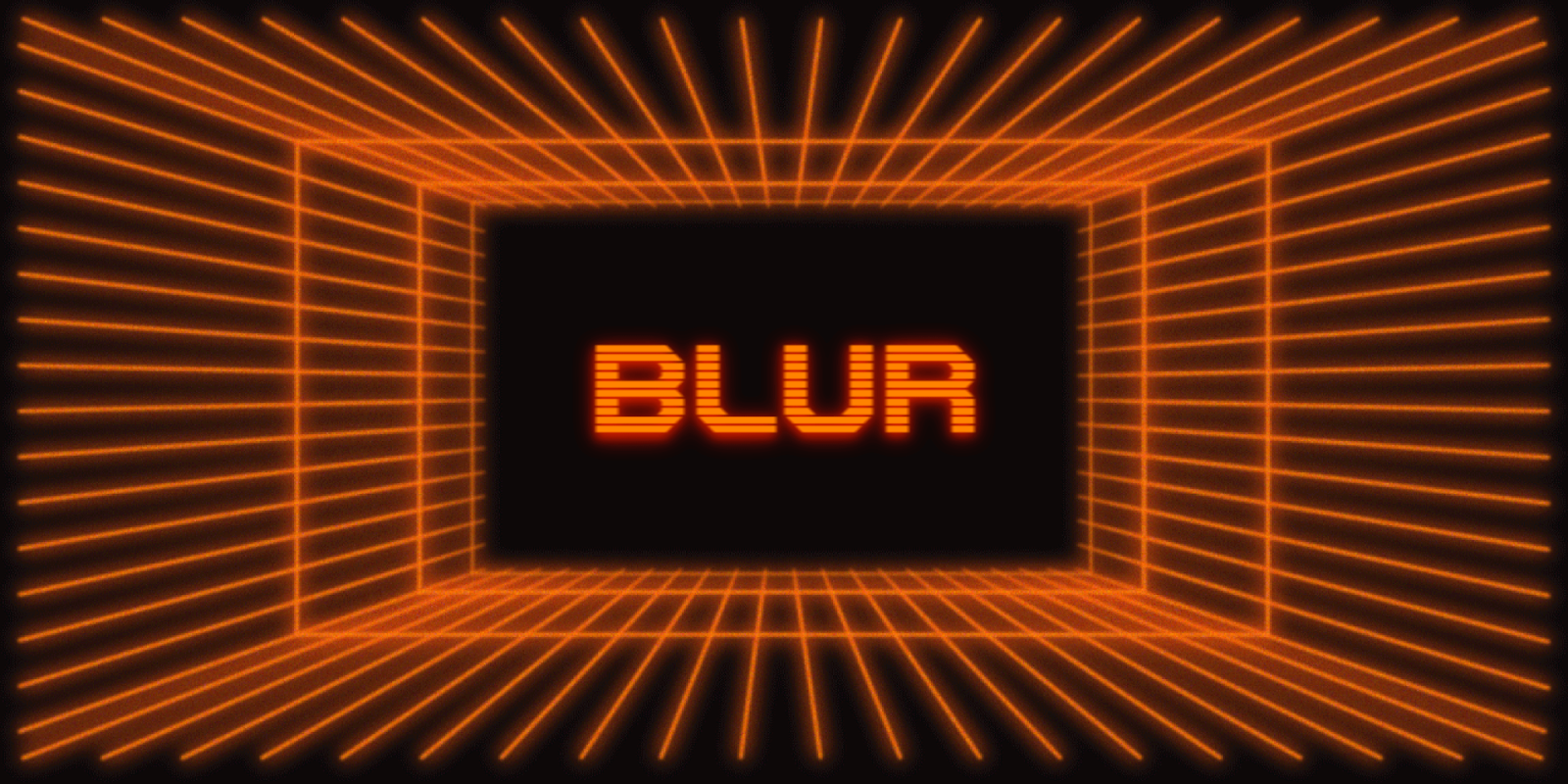
The NFT market witnessed explosive growth, attracting a diverse range of participants. However, the needs of professional traders were often overlooked by existing platforms. Blur emerged in early 2022 to address this gap by offering a feature-rich, zero-fee marketplace specifically designed for experienced traders. This article delves into Blur's innovative approach, exploring its key features, airdrop strategy, and impact on the NFT landscape.
Early NFT marketplaces catered to a broad audience, lacking advanced functionality for professional traders. High platform fees further eroded profitability for those actively trading NFTs. Additionally, existing incentive structures often failed to encourage behaviors that benefit the entire NFT ecosystem, such as respecting creator royalties.

Blur addressed these challenges by offering a suite of features tailored for professional traders:
Zero-fee marketplace: Blur broke the mold by eliminating platform fees, significantly reducing user trading costs.
Advanced functionality: Blur boasts functionalities such as sweep and listing across marketplaces, sniping reveals, portfolio management tools, and mass listings, all of which empower traders to execute complex strategies efficiently.
Incentivized royalties: Blur's airdrop system rewarded users who listed NFTs with royalties, encouraging them to support creators within the ecosystem.
As such, Blur was the ideal NFT trading product but being a good product was one end of the scale. Blur needed quality awareness and acquisition in an already competitive marketplace with competitors like Opensea, GEM, Looksrare, etc. To achieve that, the team utilized point-based incentives in one of the most diverse manners the web3 space has ever seen.
Gamifying Participation with a Points System
Blur's airdrop rewards were not solely based on trading volume. Instead, a point system determined the size of individual airdrops, incentivizing specific behaviors. The beauty of Blur Gamifying's airdrop dynamics lay in how they encouraged users to engage in specific actions through their Care package system. Blur Care packages are mystery boxes that contain an untold amount of $BLUR. They are segmented into essentially 3 classes: uncommon, rare, and legendary.

Users played in a blind box game where they received a certain amount of boxes based on certain criteria and then upon opening the box, the care packages were revealed, This was either based on luck or other factors like the point systems introduced by the team.
Referral Points: Users earned points by referring other users to the platform and also earned a portion of their referees' points.
Listing points: Users earned points for listing NFTs, with factors like blue-chip status and collection activity influencing the points awarded.
Bidding points: "Riskier" bids (closer to the floor price) received more points, encouraging strategic participation. The longer a bid remained active, the more points it accumulated.
Lending points: These replaced listing points for certain airdrop seasons, allowing users to earn points by providing liquidity through NFT lending.
Loyalty System: Users who primarily listed on Blur enjoyed a higher chance of receiving high-value care packages containing more $BLUR tokens, thus encouraging long-term engagement with the platform.
Royalty Benefit System: The team provided incentivized royalties for creators; essentially, the more royalties you set, the more you earn.
With this combination of points and strategy systems, Blur set a precedent in Web3 marketing and ensured the proper acquisition of NFT traders to the Blur platform.
Building a Loyal Community Through Strategic Airdrops
Blur strategically distributed its native token, $BLUR, through a series of airdrops, which not only attracted users but also fostered a sense of ownership and community.
Season 1 Airdrop (ended Feb 2023): This Season was divided into three separate airdrops. Each airdrop was aimed at user acquisition and set the stage for a thriving community. This airdrop campaign strategically targeted two key demographics: active traders and early Blur engagers, aiming to attract established users and leverage their expertise. Season 1 airdrop recipients were familiar with trading strategies and could contribute to platform liquidity, leading to boosted initial activity upon launch and long-term engagement.
Airdrop 1 (ended Oct, 2022): This airdrop was directed toward user acquisition, starting from the Blur beta waitlist period until Blur went live. It rewarded users with care packages through the referral point system, cross-platform trade activity, and early listing on the platform.For referral points, users were encouraged to join the waitlist through invites, with early access granted in the order of points held. Members receive 5 invites and an initial number of points based on their trading volume across other platforms. Sharing an invite increased points by 1/5 of the invite's points, and 2nd-degree invite points increased by 1/25 invite's points. This encouraged users to invite high-value NFT traders, as each invite’s points held weight. Points were also boosted by 50% after two invites were redeemed, and after five invites were redeemed, points were boosted by 100%.
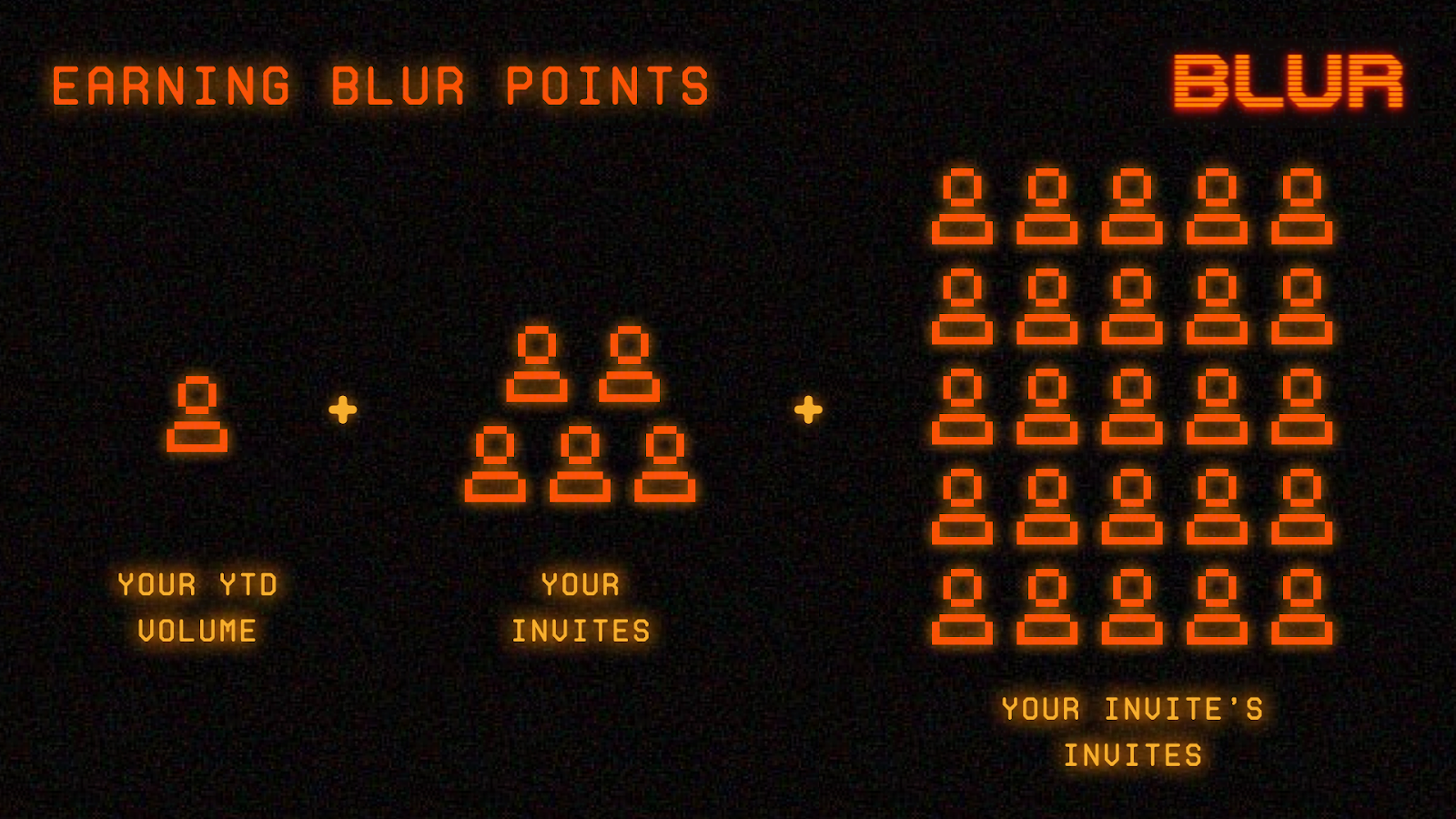
Airdrop 2 (ended Nov, 2022): This officially went live along with the Blur marketplace. This airdrop was strategically placed to onboard many experienced traders and creators to Blur.
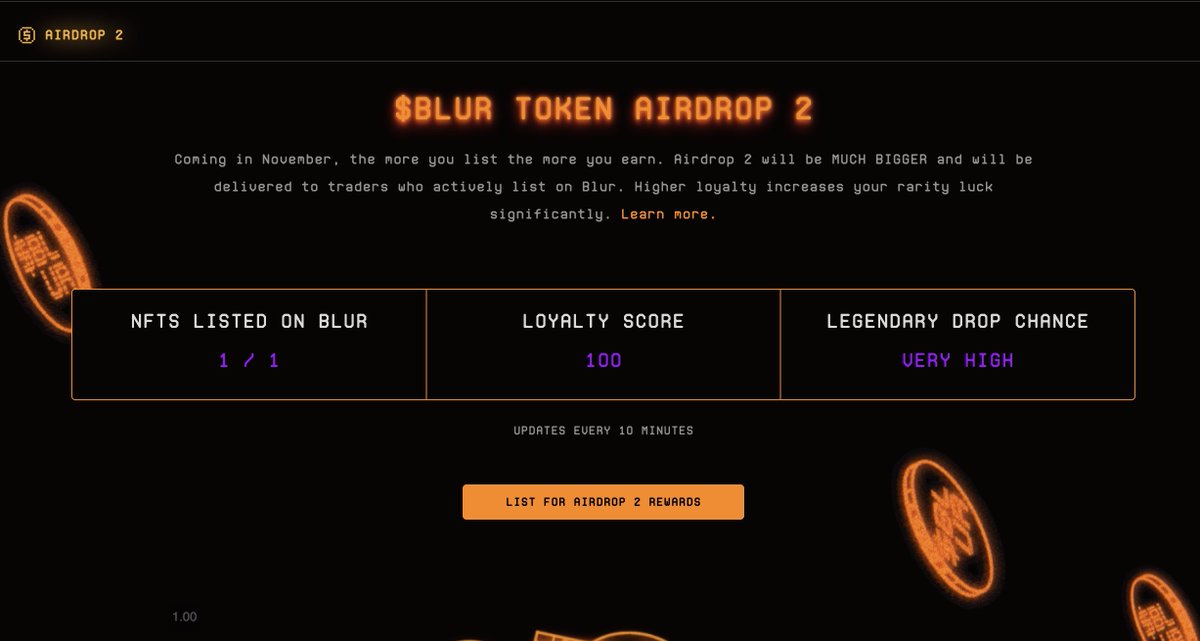
It featured the listing points system, royalty benefit system, and loyalty system. The dynamics behind the listing points weren’t fully disclosed but for the royalty benefit system, Blur encouraged creators to set royalties on their collections; the more royalties you set for a collection in comparison to the royalties on other platforms, the more you airdrop earn.
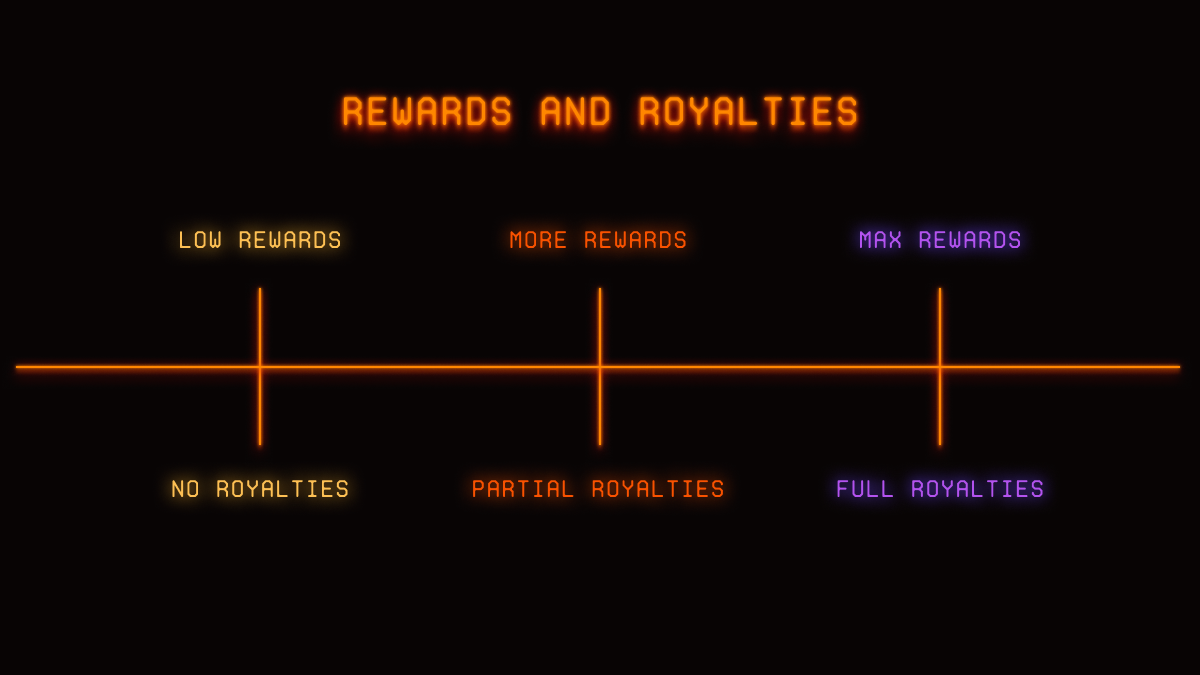
Blur's final marketing pull in Airdrop 2 was their loyalty point system. Loyalty on Blur is a measure of how many NFTs you've listed compared to other marketplaces. It didn't affect Airdrop 2 Care Packages, but it affected your luck when revealing them. High loyalty increased the odds of getting rare care packages with more $BLUR tokens. Listing on other marketplaces didn't affect the loyalty score, as long as it was the same price or lower on Blur.
Airdrop 3 (ended Feb, 2023): This was the final airdrop set towards the $BLUR token TGE. It maintained the previous reward systems from the previous airdrop but focused on rewarding bidders through a bid point system. Points were awarded to bids on collections based on the collection's 24h volume. High-risk bids earned the most points. The longer a bid is active, the more points are received. When a bid is accepted, it stops earning points.
Users were rewarded with care packages upon the completion of each airdrop but could not open them until the $BLUR toke went live on February 14th, which marked the completion of Season 1 airdrops.
And the acquisition point strategy was a huge success with the platform onboarding approximately 150,000 users that made NFT trades worth $1.2 billion in just 4 months.
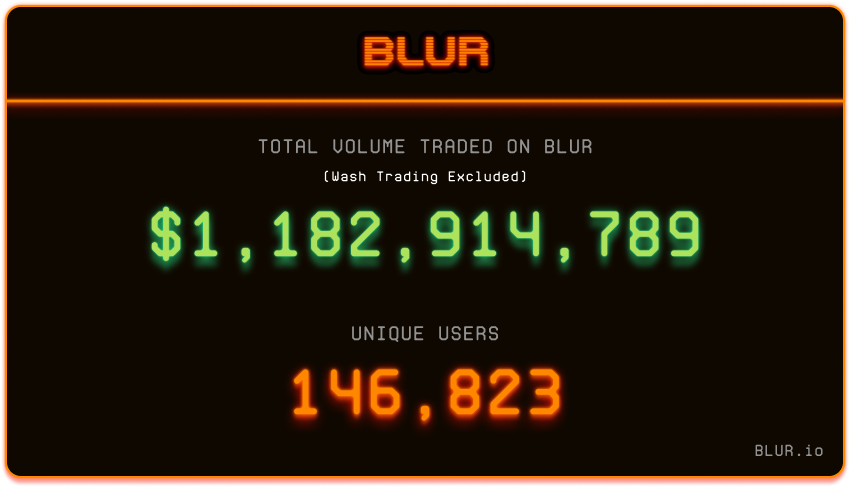
Season 2 Airdrop (ended November 2023): This airdrop distributed a total of 300M+ Blur, which were directed to encourage active listing on Blur.
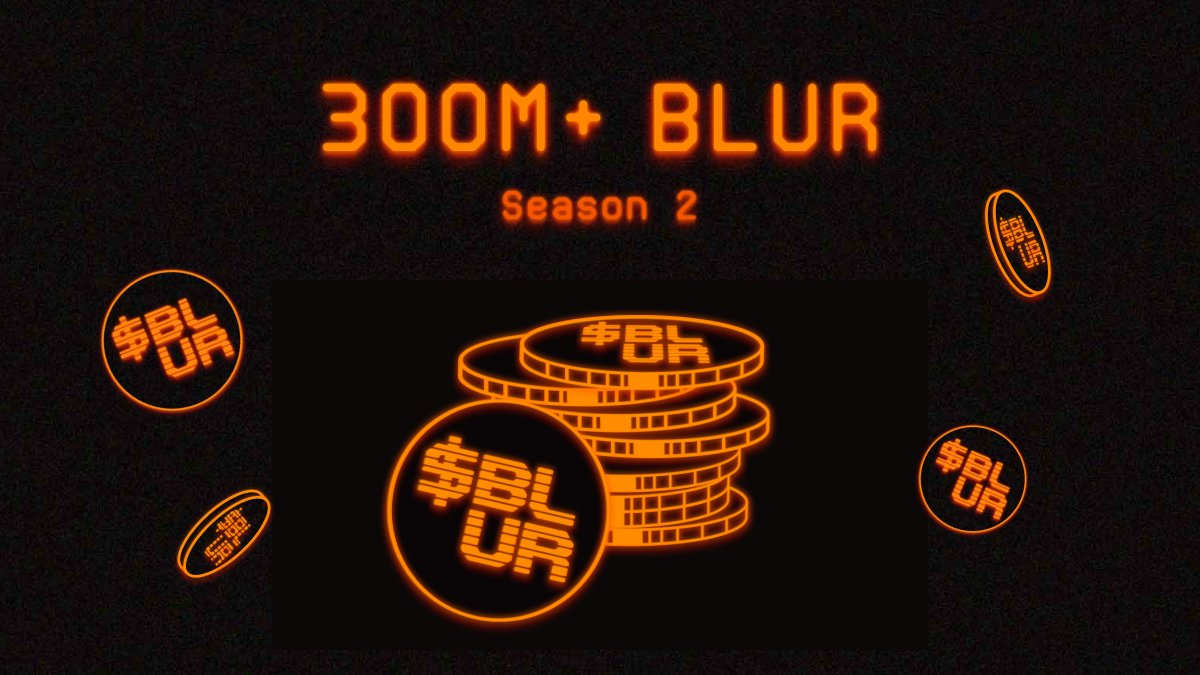
Similar to its previous season, it maintained rewarding users using listing points, bidding points, and the loyalty system; but also added a new point mechanism called lending points.
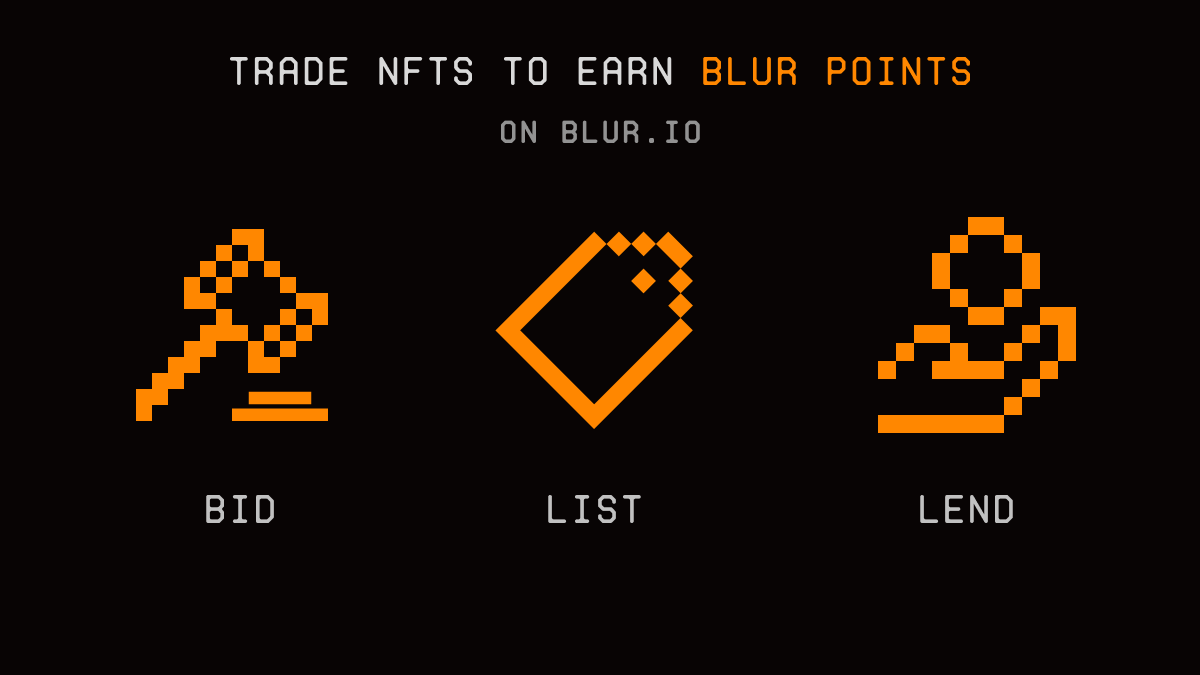
Certain collections can now earn lending points instead of listing points. They can be earned by making loan offers, which receive points based on the Max Borrow and APY, which determine the maximum amount of ETH someone can borrow using a single NFT. Multiple loan offers can be made on the same collection with different Max borrows and APYs and points can be earned for all.
Blurs’ aggressive point strategy siphoned users from other, marketplaces and created a sense of loyalty with the Blur marketplace.
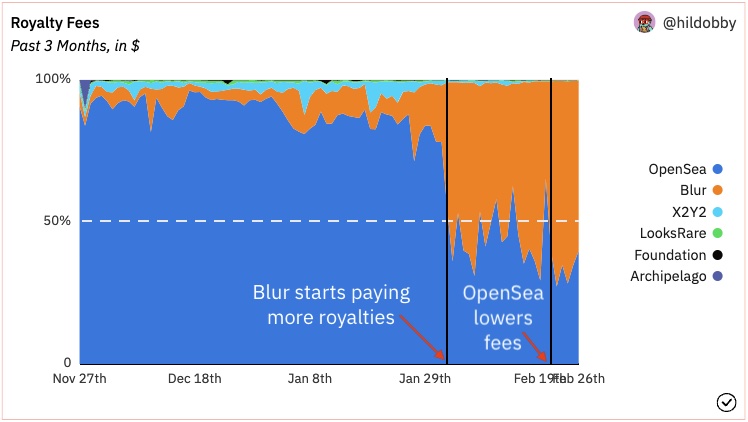
All this created amazing results, like the fact that Blur created more royalty revenue for creators than any other marketplace.
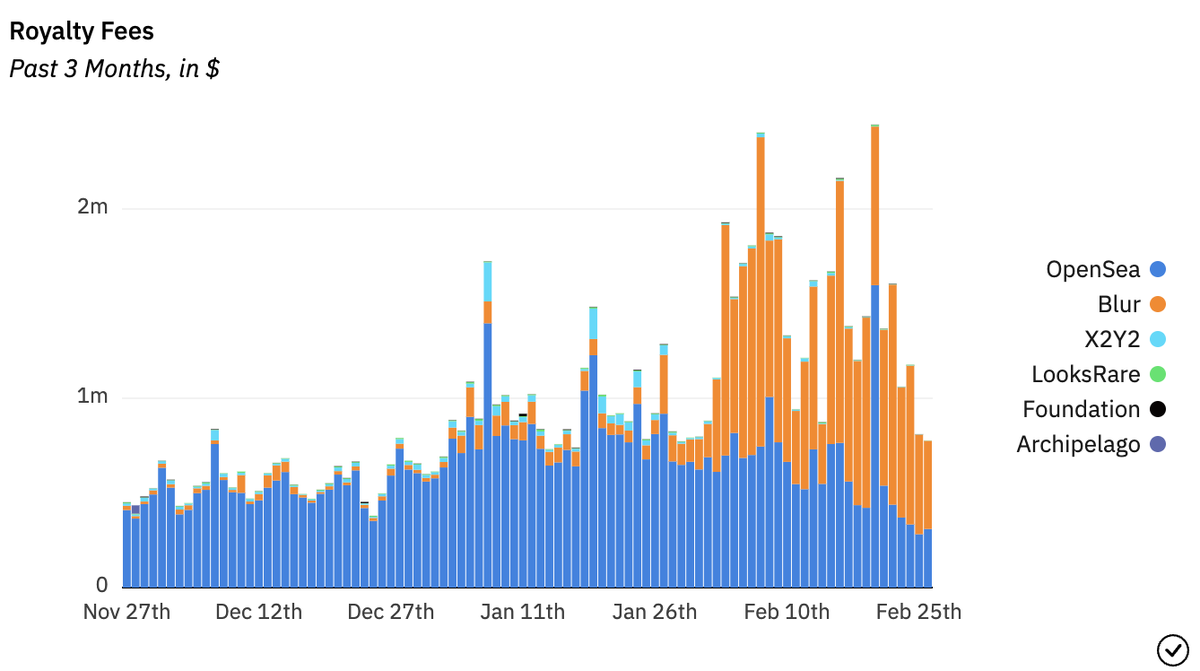
Also, Blend (Blur NFT Lending platform) witnessed $16 Million worth of loan volume in just 24 hours, which was 25x more than the previous top NFT lending protocol.
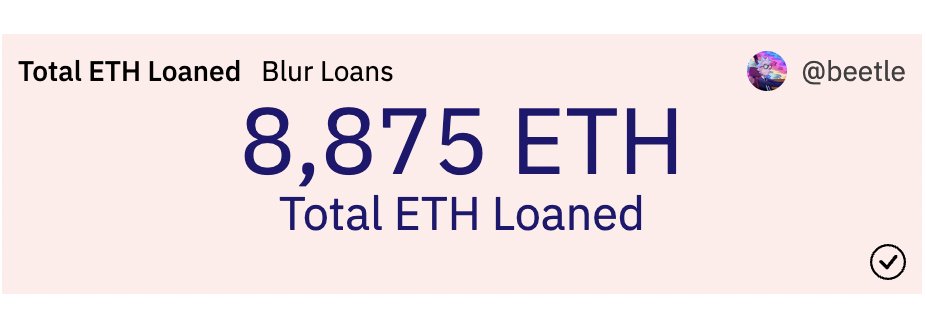
Season 3 Airdrop (Nov 2023–Present): This is the most recent airdrop that still hasn't reached completion until June 26th. But in all, it rewarded users for placing bids on Blur, with the largest reward pool yet.
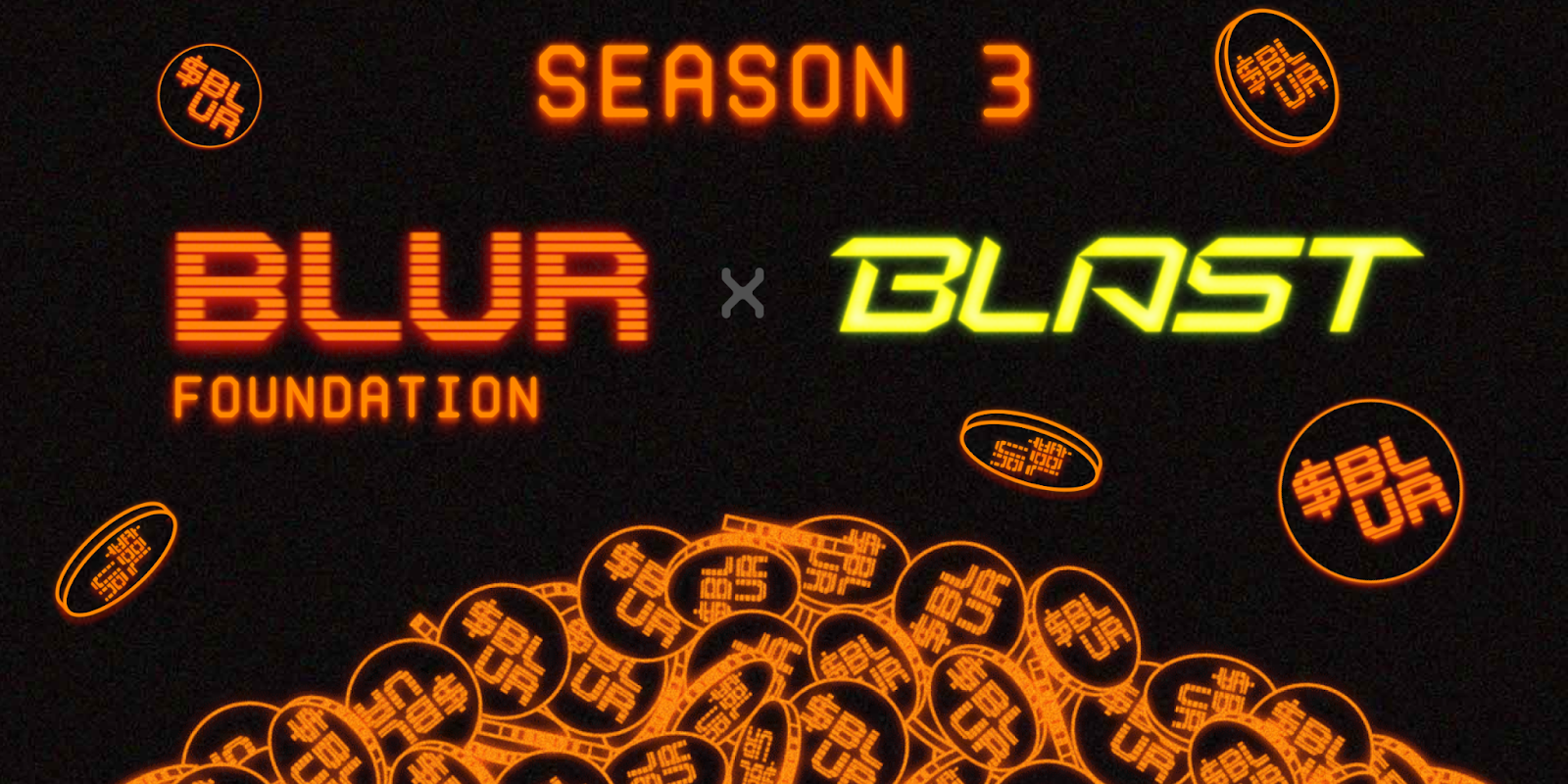
This airdrop was powered by Blast L2, offering 50% of its supply to Blur community members based on Blur Points and 50% based on their Holder Points. Just like in Season 2, you get your Blur points by bidding, listing, and lending on BLUR.io coupled with the loyalty system, and for Holder Points, you deposit $BLUR to earn Holder Points every hour based on your deposits.
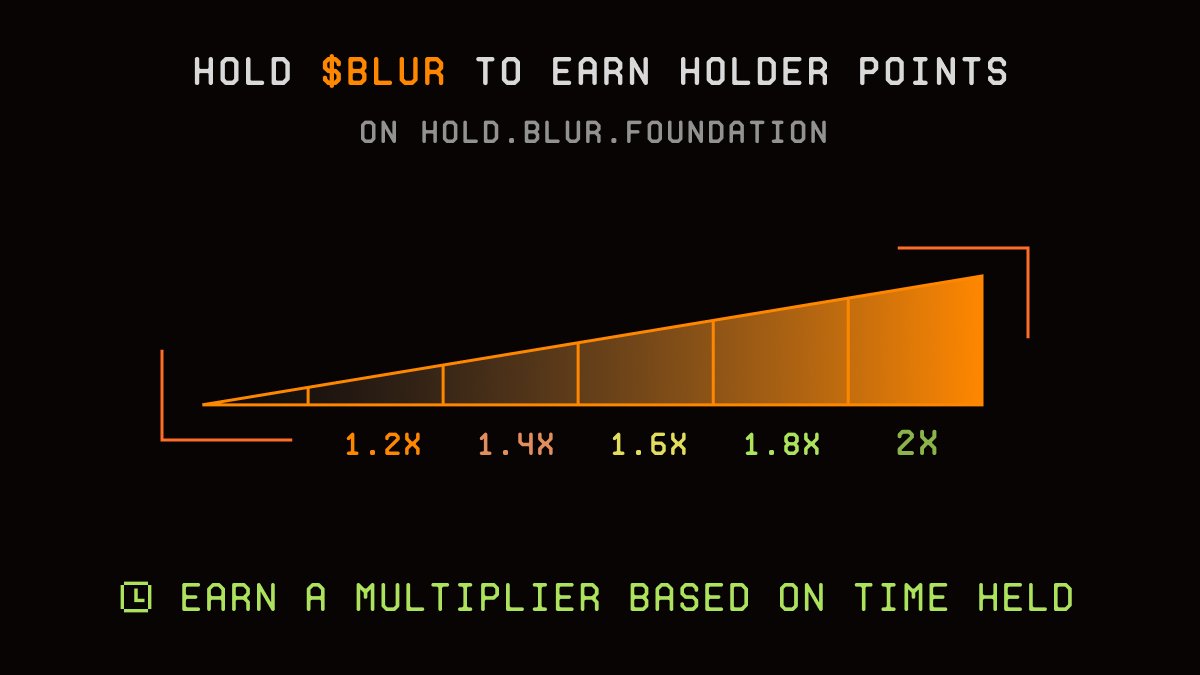
You can then withdraw anytime and still keep your points.
The multiplier starts at 1x and increases by 0.5x per month. Season 2 winners start at 2x, but your multiplier decreases proportionally with withdrawals.
Impact and Future Outlook
Blur's innovative approach has demonstrably impacted the NFT marketplace by:
Attracting professional traders: Blur's zero-fee structure and advanced features have successfully attracted a dedicated user base of professional traders.
Encouraging creator support: The airdrop system incentivized honoring creator royalties, fostering a healthier ecosystem for artists and creators.
Community-driven governance: Blur's commitment to a decentralized future is evident in its upcoming governance forum, empowering the community to shape the platform's direction.
Blur has established itself as a disruptive force in the NFT marketplace. By prioritizing the needs of professional traders, offering a zero-fee platform, and implementing a strategic airdrop system, Blur has fostered a loyal community and encouraged positive behaviors within the NFT ecosystem. As Blur embraces community governance, its future trajectory promises continued innovation and a user-centric approach to the evolving NFT landscape.
About Absinthe Labs
Absinthe Labs is building the first incentives affiliate network, and our first product is a no code points-as-a-service platform. In addition to rewarding on-chain actions, it makes tracking campaigns easy by aggregating points from questing platforms like Galxe and Layer3 into the projects native points. Absinthe also allows for easily allocating to communities such as token holders, stakers, NFT holders and Discord roles. This article was written in partnership with Absinthe Labs and @jidekelekun on X . Check them out at absinthe.network.